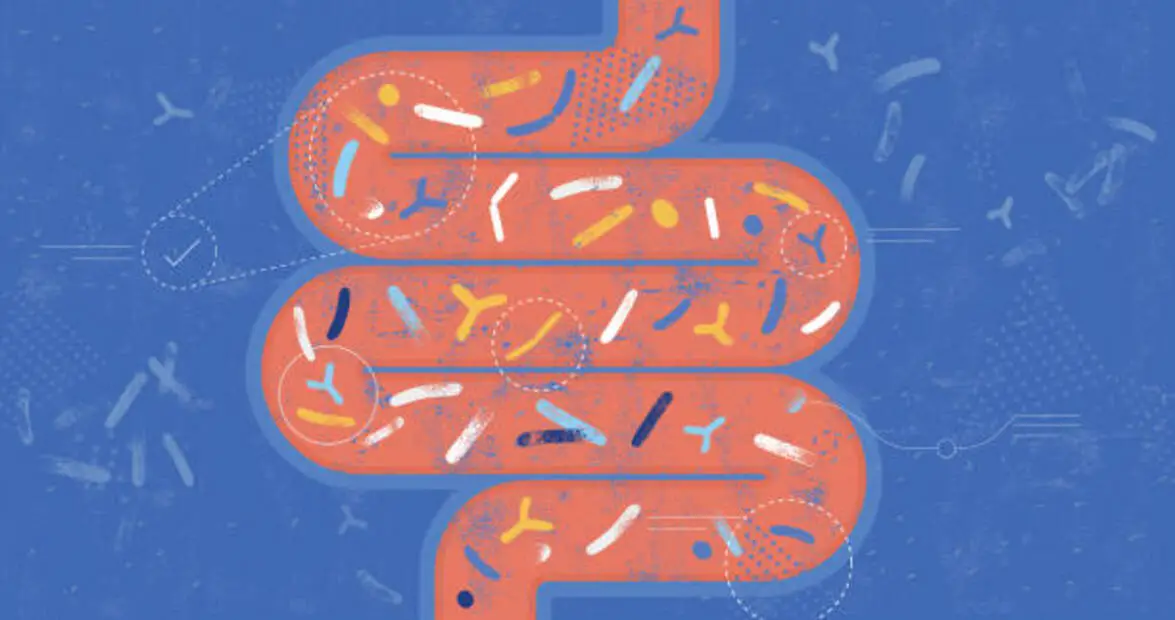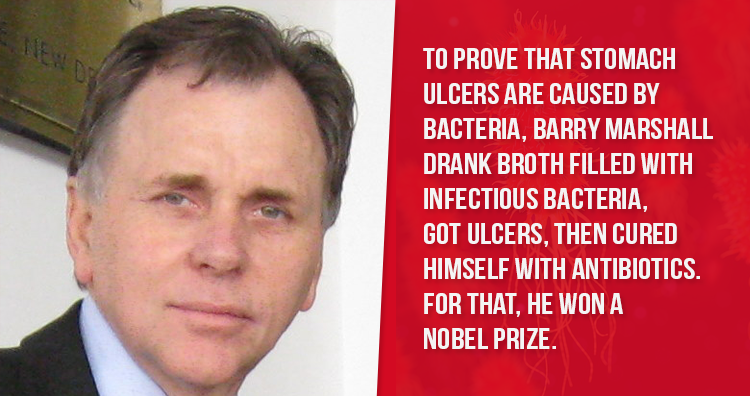
Self-experimentation is a discouraged but a reasonably widespread follow amongst scientists, particularly within the discipline of drugs. Scientists are likely to resort to it if they need the outcomes quicker, want a first-hand account of what occurs, don’t want to await the tedious forms to take its course, or due to moral points that may stop volunteers from taking the danger. Many distinguished scientists and Nobel laureates have been identified to experiment on themselves, a few of them even receiving the Nobel Prize due to it. So, listed here are just a few of those wonderful scientists who experimented on themselves.
1 In 1892, Max Joseph von Pettenkofer intentionally drank a broth containing a big dose of cholera micro organism to disprove Robert Koch’s concept that the micro organism alone is the reason for the illness. Luckily, Pettenkofer escaped with simply delicate signs.Â
Pettenkofer was a Bavarian chemist and hygienist well-known for his work in correct sewage disposal, sensible hygiene, contemporary air, and good water. Interestingly, he was additionally an anticontagionist and didn’t imagine that micro organism induced ailments. This perception put him at odds with many different up to date scientists, particularly Robert Koch, the German doctor and microbiologist who recognized the causes for tuberculosis, anthrax, and cholera, and offered experimental assist that these ailments are infectious.
One of the conflicts between Pettenkofer and Koch was over cholera. To show Koch unsuitable, Pettenkofer drank the cholera-laden bouillon on October 7 within the presence of witnesses. He additionally consumed sodium bicarbonate to neutralize his abdomen acids after Koch’s suggestion that the acid can kill the micro organism. For every week after that, Pettenkofer suffered solely delicate signs although he even claimed these weren’t due to cholera. (source)
2 In 1900, US Army doctors James Carroll, Aristides Agramonte, and Jesse Lazear let themselves be bitten by yellow-fever-carrying mosquitoes to show that they’re answerable for the illness’s unfold. Their efforts proved the mosquito-borne nature of yellow fever and saved many lives.Â
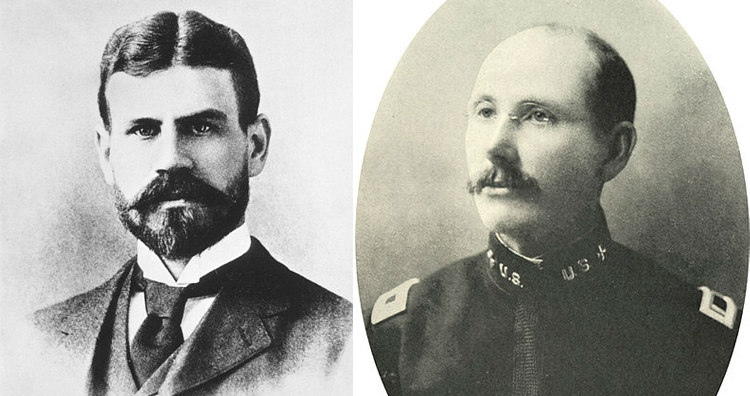
Carroll and Lazear had been a part of a analysis staff led by Walter Reed who was following the work began by the Cuban physician and scientist Carlos Finlay. In 1881, Finlay proposed that yellow fever might be transmitted by mosquitoes reasonably than human contact. In order to check the illness, Carroll and Lazear intentionally let an contaminated mosquito chew them in early September of 1900. Lazear died on the twenty sixth of that month, however Carroll recovered. Seven years later, nevertheless, Carroll died of the identical illness. (source)
3 In 1921, on the age of 60, Evan O’Neill Kane grew to become the primary particular person to carry out a self-surgery to take away his appendix. He needed to make sure that the process might be tolerated with simply native anesthesia by sufferers on whom normal anesthesia can’t be used.Â
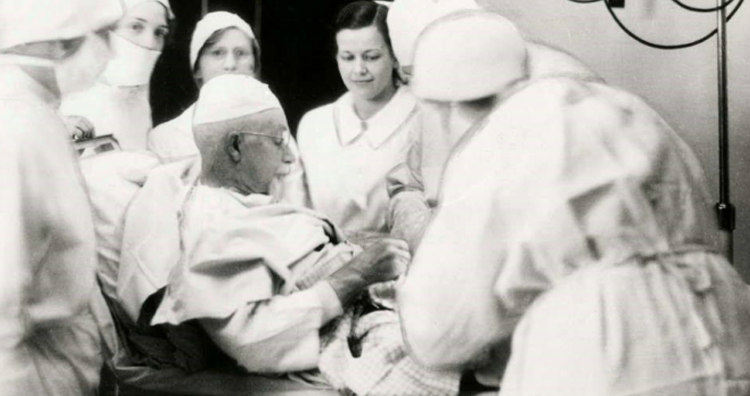
Evan O’Neill Kane was a surgeon from Pennsylvania, United States, is well-known for working on himself 3 times. The first being in 1919 when he carried out an amputation on certainly one of his personal fingers that was contaminated. The second was on February 15, 1921, when he eliminated his appendix beneath native anesthesia with the assistance of mirrors. Kane efficiently completed the process though again then it was main surgical procedure and required a a lot bigger incision than it does in the present day.
Kane needed to expertise the surgical procedure from the affected person’s perspective and was planning to make use of native anesthesia throughout future operations. He believed that ether, the final anesthesia used at the moment, was extra harmful than native anesthesia akin to novocaine, a then-recent alternative of cocaine, which he used throughout his surgical procedure. His third self-surgery occurred in 1932 on the age of 70 when repaired his inguinal hernia beneath an area anesthetic. The operation was completed in 55 minutes, and he was again to work within the working theater after 36 hours. (source)
4 In 1924, Russian scientist Alexander Bogdanov, hoping to realize eternal life, started blood transfusion experiments on himself with blood from these youthful than him. He died after utilizing blood from a pupil with malaria who fully recovered after that.Â
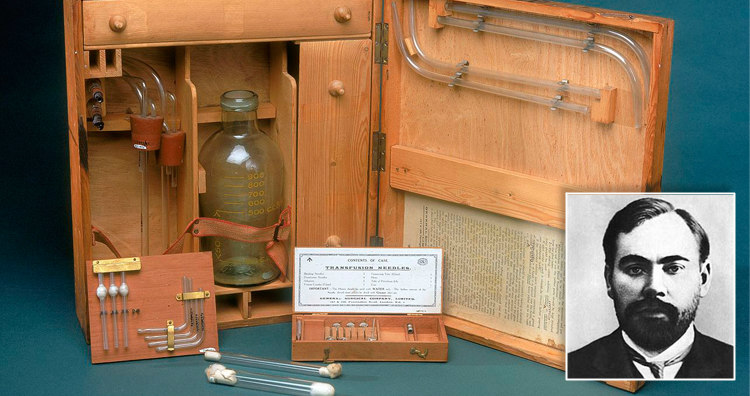
Alexander Bogdanov was a Russian doctor, political activist, economist, in addition to a science fiction author with broadly various pursuits from philosophy to medication. He was additionally identified for inventing “tectology” which is now thought-about a precursor of techniques concept and facets of synergetics. One of his pursuits within the discipline of drugs pertains to human rejuvenation by way of blood transfusion.
Bogdanov started experimenting with blood from volunteers amongst whom was Vladimir Leninâs youthful sister, Maria Ulyanova. He based the Institute for Hematology and Blood Transfusions later named after him. One of the transfusions value him his life and was completed with the blood from a pupil affected by malaria and tuberculosis. While some students imagine that his dying might have been suicide, others attribute it to the lack of know-how of blood sort incompatibility on the time. (source)
5 In 1929, Werner Forssmann grew to become the primary man to carry out cardiac catheterization when he did it on himself and walked right down to the radiology division so he might information the catheter additional in direction of the guts beneath a fluoroscope. He was later was fired, however acquired Nobel Prize in 1956.
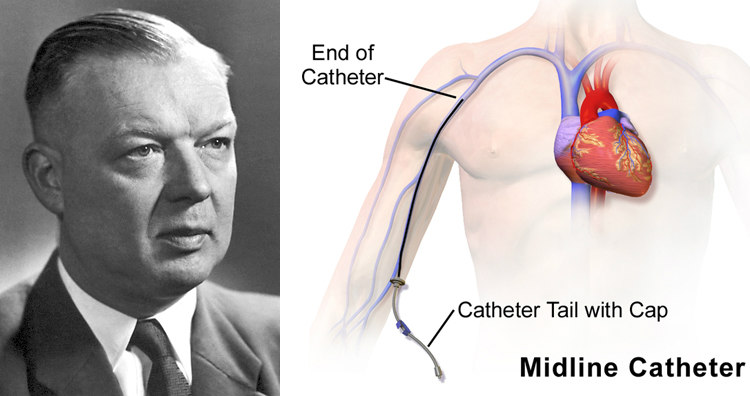
Werner Forssmann was a German doctor who was working in Eberswalde when he carried out the primary human cardiac catheterization on himself. He ignored his division chiefâs orders and persuaded Gerda Ditzen, the operating-room nurse, who solely agreed for the process to be carried out on her as an alternative. However, Forssmann tricked Ditzen. He restrained her to the working desk and solely pretended to offer her native anesthesia and minimize her arm whereas he really did it to himself.
Forssmann inserted a urinary catheter into his vein by at time Ditzen realized what was occurring. He launched her and so they walked to the X-ray division on the ground under the place he additional inserted the catheter into his proper ventricular cavity. In 1932, after working in an unpaid place on the Berliner Charité Hospital, Forssmann was compelled to go away for not assembly scientific expectations.
Unable to get a job as a heart specialist, Forssmann went on to check urology and later grew to become Chief of the Surgical Clinic at each the City Hospital at Dresden-Friedrichstadt and the Robert Koch Hospital. In 1956, he was awarded the Nobel Prize in Physiology and Medicine together with André Frédéric Cournand and Dickinson W. Richards who developed methods of making use of his method. (source)
6 In 1933, Allan Blair intentionally let a black widow spider chew him to show to those that doubted that the signs of the victims had been the results of the chew. Blair needed to be hospitalized and was in nice ache for a number of days.
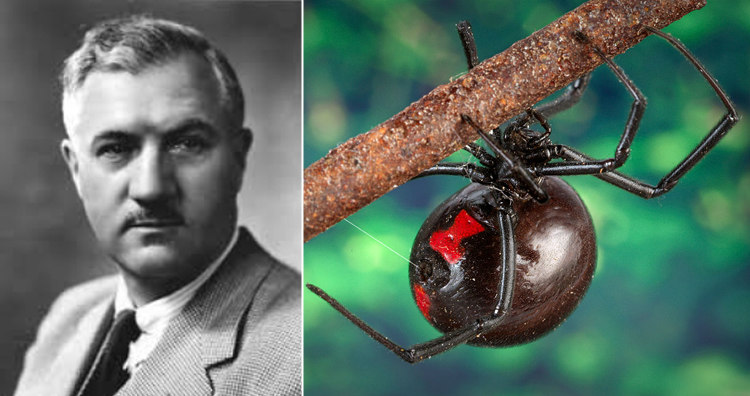
Allan Walker Blair was a professor on the medical faculty of the University of Alabama and is understood for proving that black widow spiders are poisonous to people. Back then, many believed that the venom isn’t harmful to people. Only just a few exams had been performed again then and for numerous causes had been thought-about invalid.
Apart from disproving these myths, Blair additionally hoped to search out out whether or not the chew offered victims with any immunity from the consequences. The first chew itself was so painful that he determined to not attempt a second time. He managed to chronicle the consequences on himself for 2 hours till the ache grew to become insufferable and his assistant took over. He needed to keep within the hospital for 2 days however totally recovered from the chew. (source)
7 In the Fifties, Leo Sternbach found a category of tranquilizers known as “benzodiazepines” which he usually examined on himself. Two of them are the now widely-known and usedâLibrium and Valium.
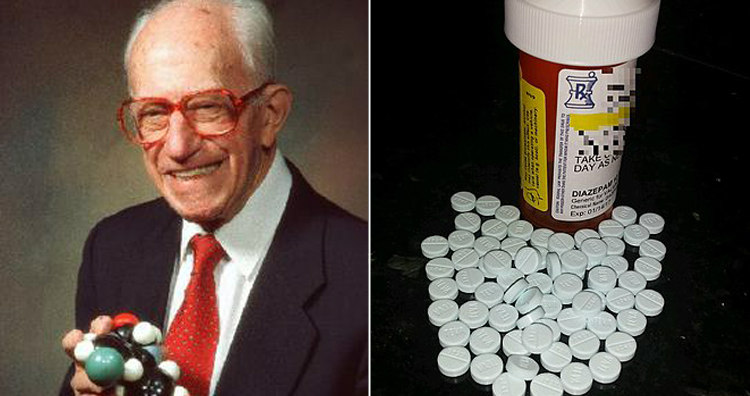
Leo Sternbach was a Polish-Jewish chemist who, whereas working for Hoffmann-La Roche in Nutley, New Jersey, found the medicine Arfonad, Klonopin, Rohypnol, Mogadon, Dalmane, in addition to Valium, and Librium. He found Librium in 1956, and it was authorized to be used in 1960. Valium is the improved model of Librium and was launched in 1963. Its discovery is credited to his hunch about compounds he had examined as dyes years in the past in Poland. His speculation, nevertheless, obtained him nowhere.
Two years later, when his colleague discovered two bottles of the outdated experiments with the compounds nonetheless in them, Sterbach determined to attempt once more. He tinkered with the molecular construction and produced a brand new model which was examined on mice, cats, and monkeys. Interestingly, although the drug tranquilized the animals, it didn’t make them unconscious. So, like with lots of the different medicine he developed, he tried the brand new compound on himself to show it was profitable. Between 1969 and 1982, Valium grew to become highly regarded peaking at over 2.3 billion doses offered in 1978. (1, 2)
8 In 1954, John Stapp strapped himself to a rocket sled to be able to examine the consequences of deceleration on human beings. He reached 46.2 g and the pace of 632 meters per hour, making him the quickest man on land.
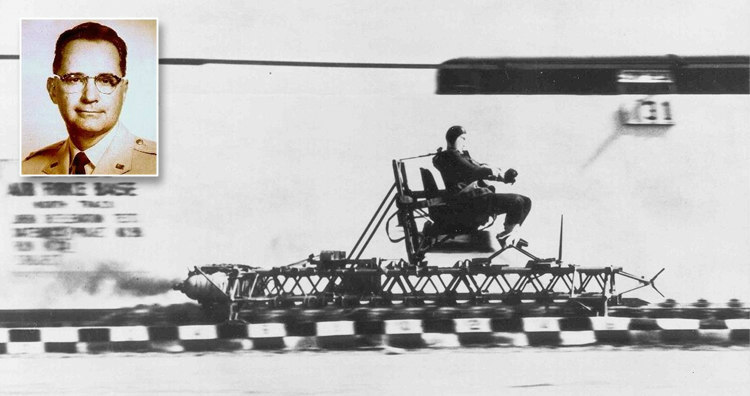
John Stapp was a biophysicist and doctor who entered the U.S. Army Air Corps as a flight surgeon. His first task was to check oxygen techniques in unpressurized plane. He solved many issues and did numerous analysis whereas working there which allowed new, high-altitude plane, HALO-insertion strategies, and helped pioneer many developments within the US house program.
On December 10, 1954, as a part of his analysis on the consequences of acceleration and deceleration on people, Stapp rode the decelerator sled at Holloman Air Force Base, New Mexico. He confirmed people can stand up to a minimum of 46.2 g with a correct harness. At 632 miles per hour (1,017 kilometers per hour), he broke the land pace document because the quickest man on earth. Stapp can be was credited for popularizing and authoring the ultimate model of Murphyâs Lawâ”Anything that may go unsuitable, will go unsuitable.” (source)
9 In 1984, Barry Marshall drank a broth containing Helicobacter pylori to show that it was the micro organism and never stress or spicy meals that causes peptic ulcers. In 2005, he and his long-time collaborator, Robin Warren, had been awarded the Nobel Prize for locating the micro organism.
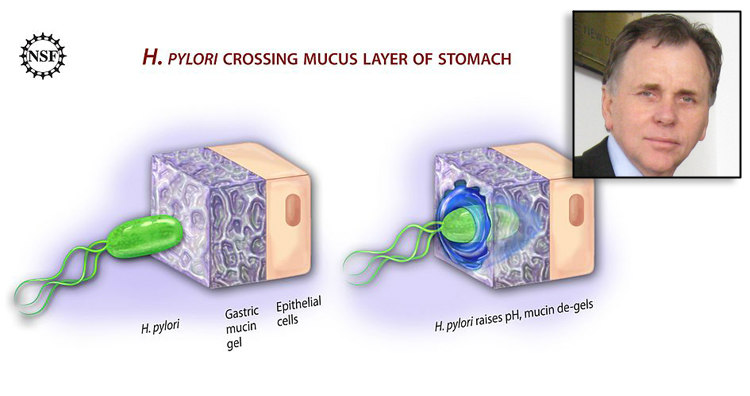
Barry Marshall is an Australian doctor and Professor of Clinical Microbiology on the University of Western Australia. While working as a registrar in medication on the Royal Perth Hospital, he and pathologist Robin Warren studied H. pylori and shaped their speculation about the reason for peptic ulcers and gastric most cancers. The concept was on the time mocked by different scientists and medical doctors there who believed micro organism couldn’t survive the acidic atmosphere of the abdomen.
When Marshall and Warren submitted their findings about H. pylori cultures in 1983 to the Gastroenterological Society of Australia, their paper was turned down, receiving a score within the backside 10% of these submitted that 12 months. In 1984, when makes an attempt to contaminate piglets failed, Marshall drank a broth containing the micro organism anticipating the signs to not develop for years.
But, in simply three days, he developed nausea and dangerous breath. In 5 to eight days, there was achlorhydric (no acid) vomiting, and his abdomen was badly infected A biopsy confirmed the micro organism had colonized. After 14 days, Marshall took antibiotics and recovered. (source)
10 In 1998, Kevin Warwick had an array implanted in his arm with which he was in a position to connect with the Internet at Columbia University and management a robotic arm on the University of Reading in addition to get sensory suggestions from it.
Kevin Warwick is a British researcher well-known for his analysis on interfaces between a pc and the human nervous system in addition to analysis in biomedical engineering, management techniques, synthetic intelligence, and robotics. The most well-known analysis challenge of his is “Project Cyborg,” which additionally earned him the nickname “Captain Cyborg.”
The first stage of the challenge started on August 24, 1998, wherein a easy RFID transmitter was implanted beneath Warwick’s pores and skin. With it, he was in a position to management doorways, lights, heaters, and different computer-controlled gadgets close by. The second stage was interfacing with a fancy neural interface created by Dr. Mark Gasson and his staff on the University of Reading instantly from Warwick’s nervous system. The interface was implanted on March 14, 2002, from which he successfully was in a position to management a robotic arm. (source)
Also see: David Reimer: The Boy Who Was Forced to Be a Girl in a Controversial Nature Vs. Nurture Experiment


